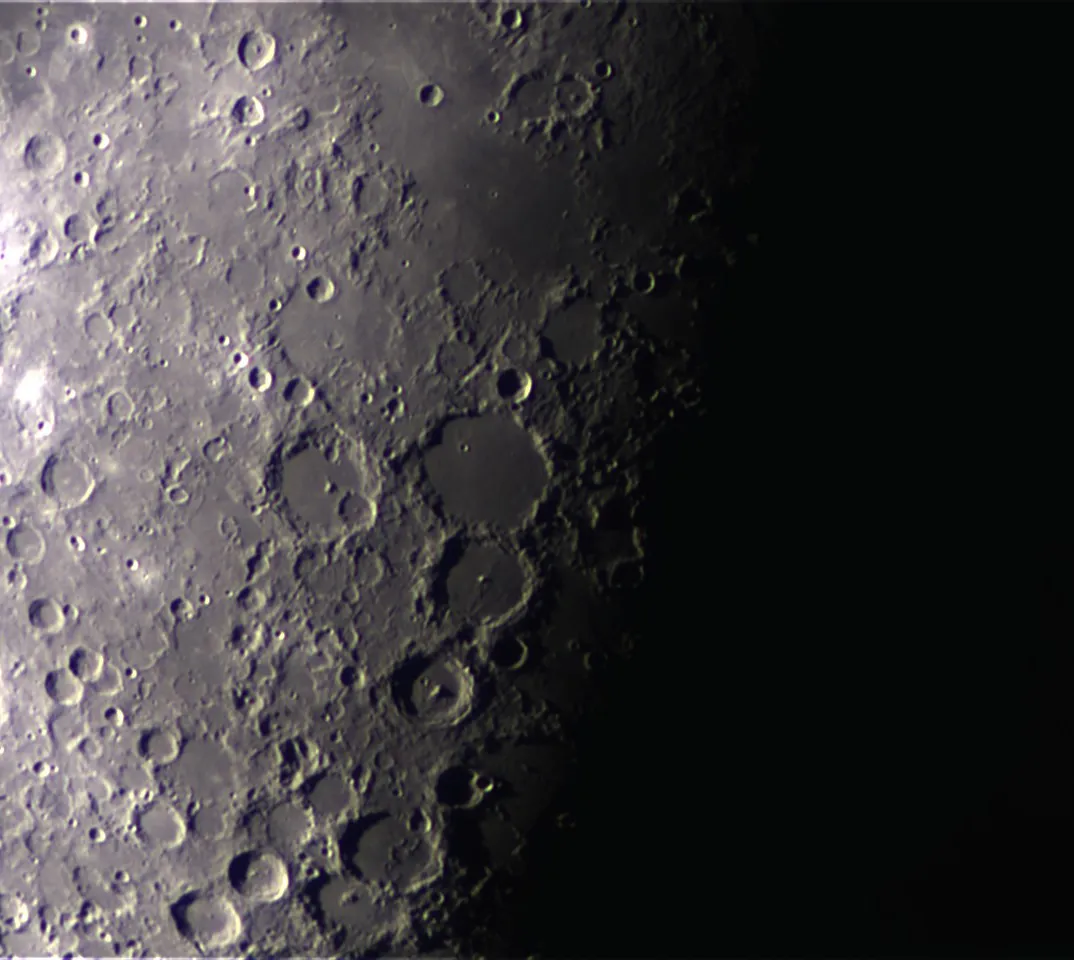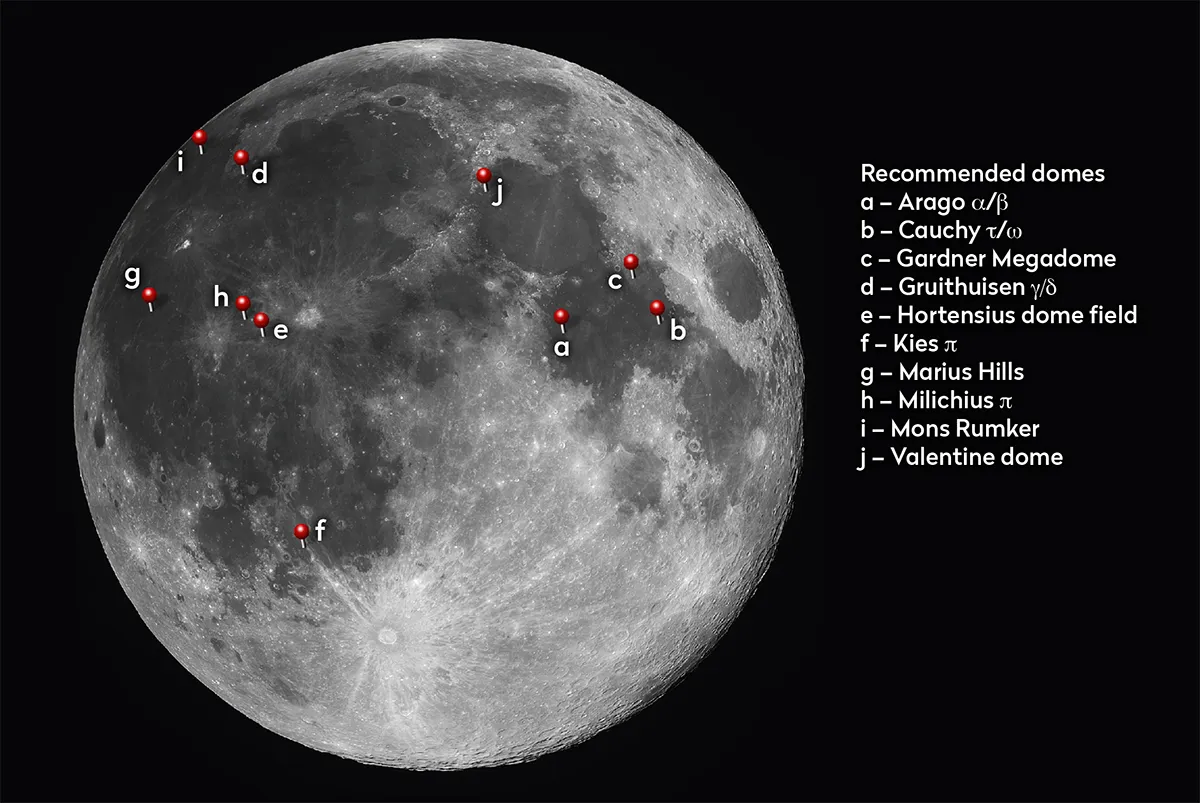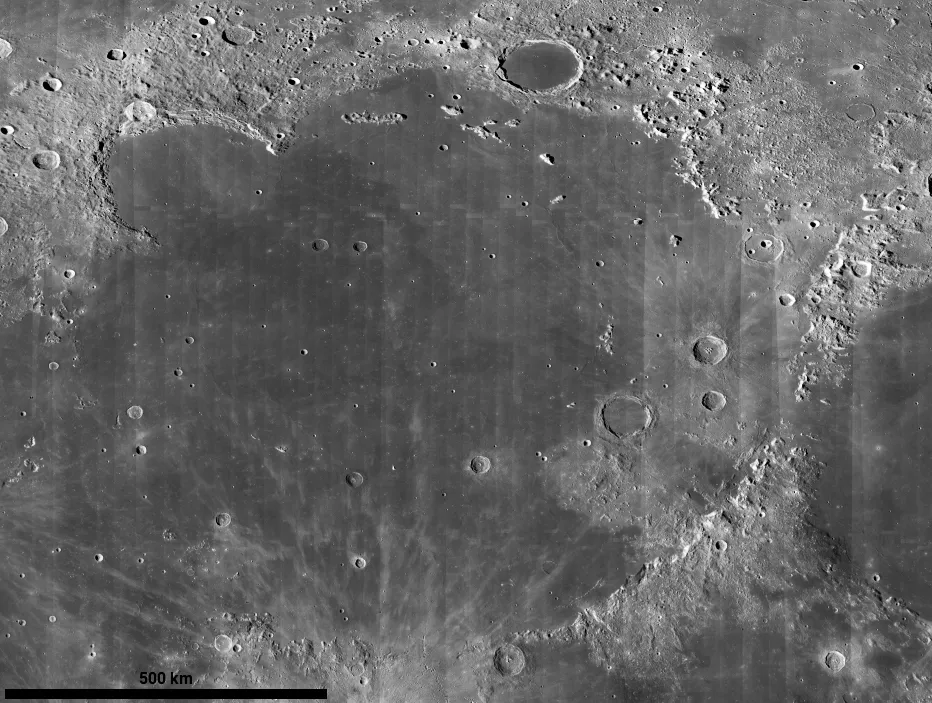Much of the Moon’s detail you can view through a telescope has come from meteoric impacts on the lunar surface.
Features such as craters and basins are the result of impacts that occurred a long time in the past.
However, there is evidence of vulcanism on the Moon’s surface too.
Some of it is obvious when pointed out, such as the dark patches around the inner edge of the 118km crater Alphonsus, the result of fire-fountain eruptions from cracks in the crater’s floor.

Lunar domes and shield volcanoes
A less obvious structure that can take a little work to find is that of the lunar dome.
These are shallow, rounded features rising to a height of perhaps several hundred metres.
Best seen when the terminator is close by and the lighting oblique, they can stand out surprisingly well.
When you see a lunar dome, you’re looking at a formation resulting from a shield volcano.
A shield volcano is a type of volcano that produces low-viscosity lava that is able to travel a long distance from the eruption point and forms generally thinner flows.
The name comes from the resulting shape, which looks like the domed appearance of a warrior’s shield laid on the ground.
Where to find volcano domes on the Moon

There are many examples of lunar domes, and hunting them down can become a bit of an obsession.
We have many favourites that we can recommend to get you started, but these are by no means all of them.
In the east, there’s the Cauchy Tau (τ) and Omega (ω) domes, located south and southwest of 13km crater Cauchy.
The unofficially named Gardner Megadome is a huge but tricky domed structure 80km across, with a depression at its centre. It lies south of 18km Gardner.

The Valentine Dome, near the interface between Mare Serenitatis and Mare Imbrium, is worth a visit too.
It sits 105km northwest of 3km Linne. In Mare Tranquillitatis, try to find Arago Alpha (α) and Beta (β).
To the west, there’s dome overload, starting with Mons Rumker, a feature near the northwest limb which resembles a raspberry.
Two obvious domes sit near to Mons Rumker in the form of Gruithuisen Gamma (γ) and Delta (δ). These are often likened to upturned bathtubs!
West and north of 41km crater Marius there’s a whole field of domes known as the Marius Hills.
Further east, towards crater Copernicus, seek out Milichius Pi (≠) and the superb Hortensius dome field.
In the south, around Mare Numbium there’s Kies Pi (≠), which lies immediately west of 45km Kies.
Using our guide chart above, see how many you can find and record.
Have you managed to find and photograph any lunar domes? Let us know by emailing contactus@skyatnightmagazine.com
